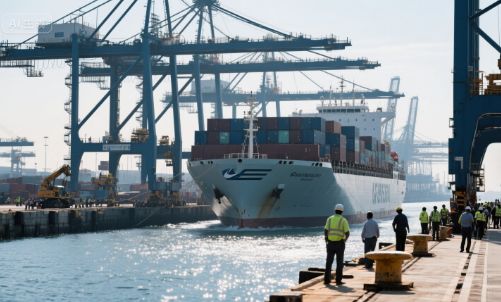Trans-Pacific Rates Surge: West Coast +71.2%, East Coast +62.0%, Mediterranean +41.8%, South America +104.7%—Global Freight Rates Soaring Across the Board
Release time:
2025-06-07
The North American trade lane has been bolstered by a surge in “rush exports,” with cargo volumes remaining high, space availability tight, and congestion emerging at certain ports. As a result, market freight rates have risen significantly.
Benefiting from a temporary easing in the U.S.-China trade tensions, freight rates on major global shipping routes have surged recently.
According to the Shanghai Shipping Exchange, the Shanghai Containerized Freight Index (SCFI) stood at 2,240.35 points on June 6, up 41.2% from 1,586.12 points two weeks prior.
Specifically on North American routes, the export rush has kept cargo volumes high. Although total shipping capacity has recovered to pre-trade-war levels, space remains constrained, and some ports are experiencing congestion, pushing rates sharply higher.
On June 6, freight rates (including base ocean freight and surcharges) from Shanghai to major West Coast and East Coast ports in the U.S. reached $5,606/FEU and $6,939/FEU, respectively, compared to $3,275/FEU and $4,284/FEU two weeks ago—an increase of 71.2% and 62.0%.
According to data released by research firm ADP, the U.S. added only 37,000 jobs in May, far below market expectations and the lowest since March 2023, indicating a notable cooling of the U.S. job market.
At the same time, U.S. President Trump has further raised tariffs on steel and aluminum, adding uncertainty to the tariff policy and casting doubt on the economic outlook.
Driven by strength in North American routes, freight rates for Europe, the Mediterranean, the Persian Gulf, and South America have also risen sharply.
On June 6, freight rates from Shanghai to base ports in Europe stood at $1,667/TEU and to the Mediterranean at $3,302/TEU, up 26.6% and 41.8%, respectively, from two weeks earlier.
Additionally, rates to Persian Gulf base ports rose 39.1% to $1,929/TEU, while rates to South America soared 104.7% to $3,959/TEU.
Analysts warn that due to a significant increase in shipping capacity, North American routes may experience vessel delays, with large numbers of containers potentially stuck at ports or delayed in transit. This could lead to a repeat of the 2024 supply chain disruption where containers were extremely scarce.
Moreover, given that this round of price increases is driven by short-term positive news, freight rates on North American routes are expected to peak in June and remain high through mid-July. However, once the 90-day tariff window closes, the U.S. may impose additional tariffs on Chinese goods. At that point, with backlogged cargo cleared and operating costs rising, the market may face a sharp cool down after mid-July.










